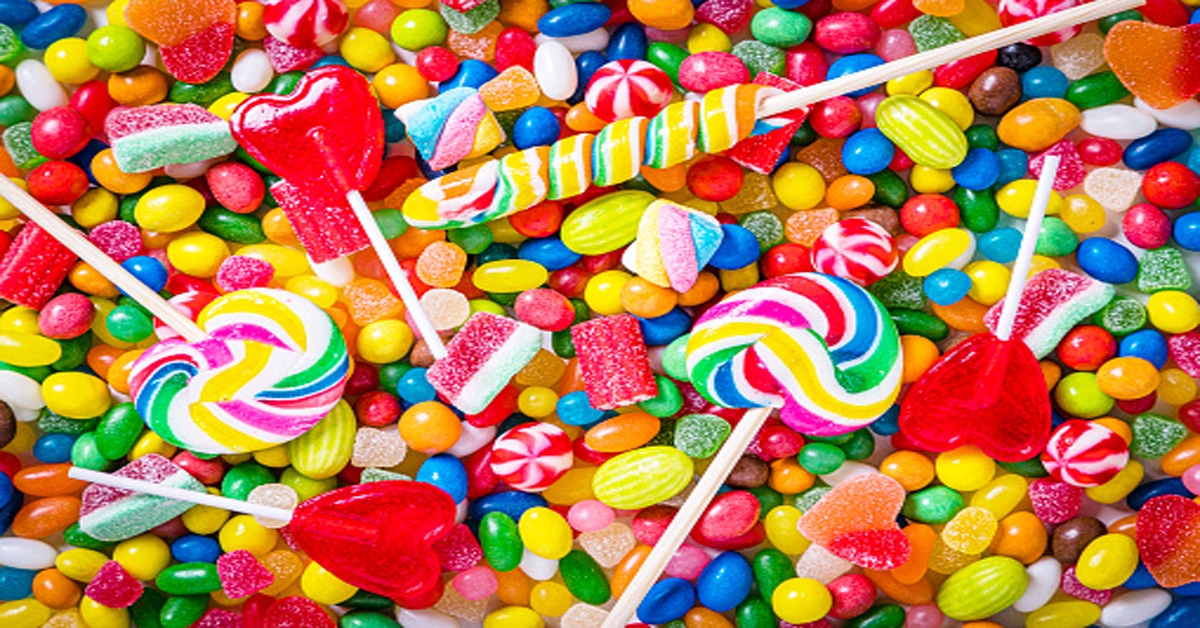National Candy Day – History & Celebration Of Sweet Tastes
You can hardly find a kid who doesn’t adore sour and sweet snacks. Throughout our childhood, candy was a consistent source of happiness. Considering this, National Candy Day is a real holiday for everyone who associates candy with feelings of nostalgia.
Whether you prefer hard, chewy, fruit-flavored, or a “melt in your mouth, not in your palm” kind of pleasure, we bet that exploring the history and origin of National Candy Day will help you revive childhood memories. So, let’s dive deep into glass sugar, sweet licorice, and baked delicacies like cookies, bread, puddings, and all the other candies that create National Candy Day.
Please leave a review or any memories of this snack in the comments at the bottom of this page. Thank you!
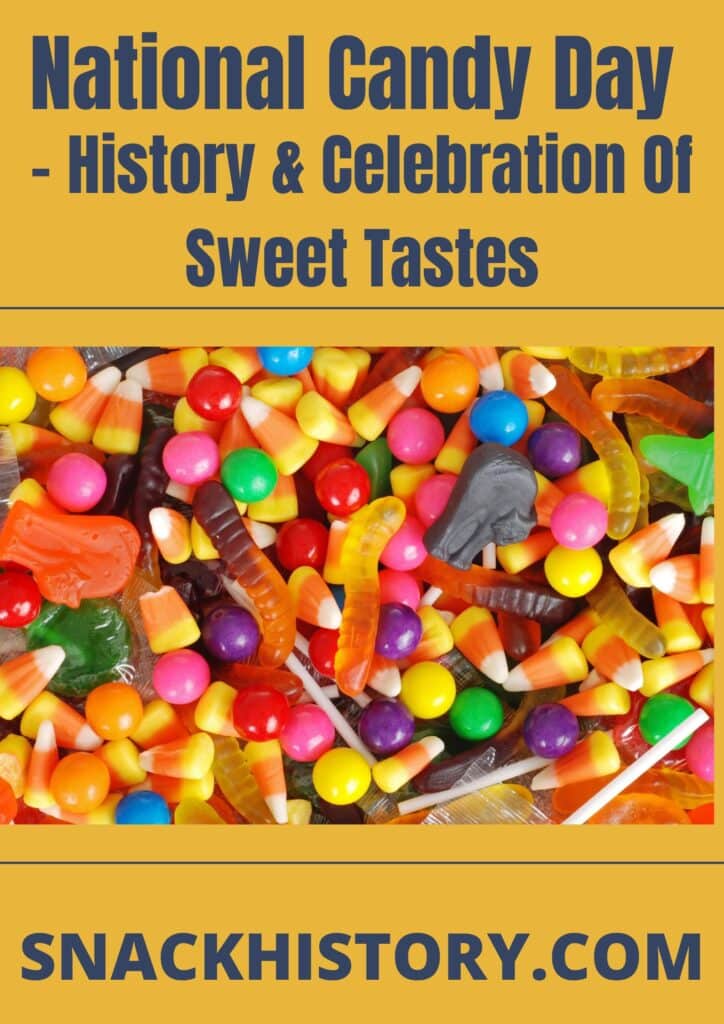
History Of National Candy Day
The history of sweet candies originated in America in the 18th century. Few people could afford it since the cultivation of sugarcane and the manufacture of sugar required specialized labor. Candy is today, however, everyone’s favorite snack, thanks to technology and the industrial revolution. The kids adored candy, which eventually became a common food item offered in supermarkets.
Every year on November 4 in the US, National Candy Day is celebrated. The holiday serves as a reminder for us to give our loved ones permission to unwind and indulge in sweet treats. Four days following Halloween, on the eve of All Saints Day, comes National Candy Day.
It’s unclear when National Candy Day first appeared. However, October 22, 1922, is known as the first “sweetest day” in history. C.C. Hartzell, a confectionery producer, started it. A group made up of 12 confectioners in Cleveland was established at that point, and the inaugural Sweetest Day was inaugurated. The group planned to distribute over 20,000 chocolate boxes to the locals. Later, this day evolved into National Candy Day, which is mostly observed throughout the United States of America.
To put it simply, National Candy Day is a chance for people to spend time with their families. This marketing tactic has been employed several times, particularly when it comes to food marketing boards. Candy Day was renamed Sweetest Day in 1921, and as a spoof Valentine’s Day celebration, it quickly acquired greater popularity.
National Candy Day may be just another marketing strategy or public relations effort by a company to increase consumer interest in sweet treats outside of the traditional Christmas shopping season. The same can be said about National Candy Month, which takes place in June.
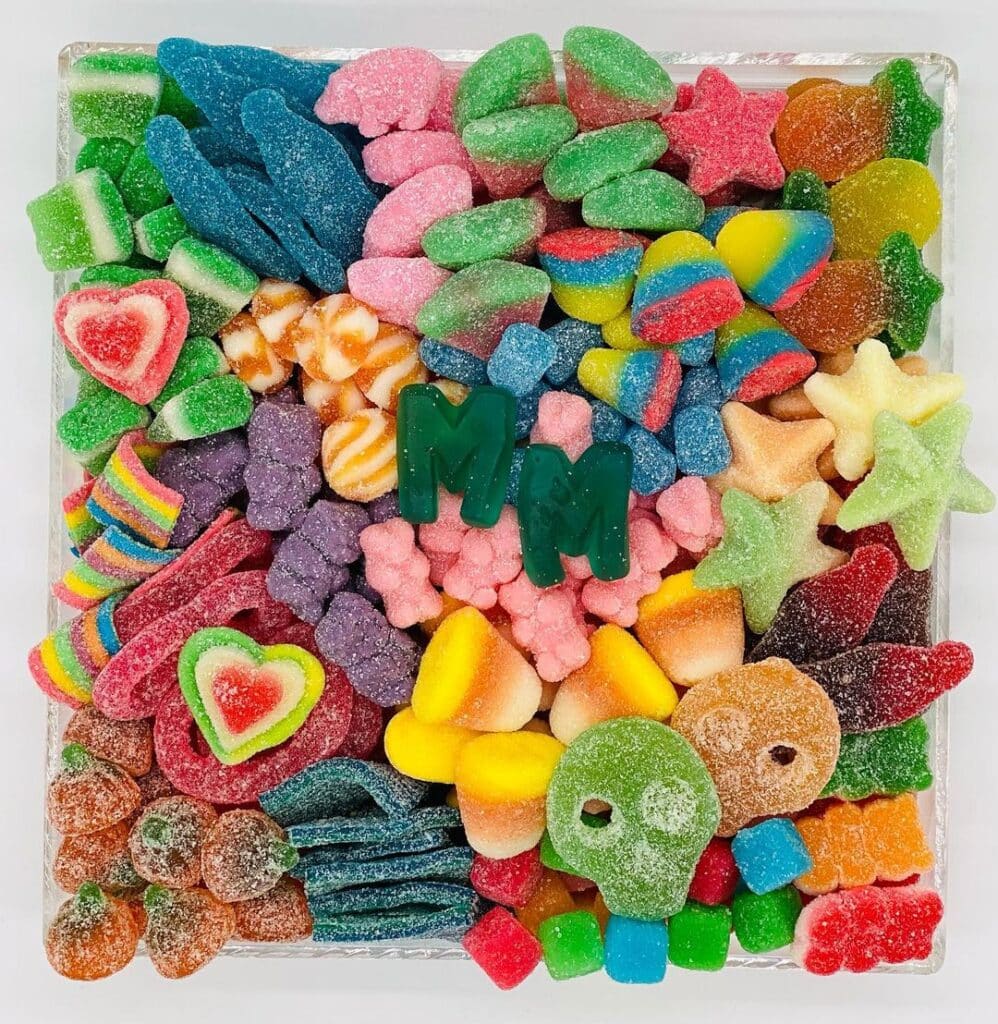
Why Do We Celebrate National Candy Day?
The first thing that may immediately pop up to your mind whenever someone mentions “National Candy Day” is the question — why do we celebrate this day at all? Indeed, as a candy lover, you might be wondering what this day stands for and why people started celebrating it.
Once again, one of the most obvious reasons why we celebrate National Candy Day is that it’s a simple marketing trick to convince people to buy their beloved candies. The majority of famous candy brands usually use this day to help their customers spread love and rationalize their sweet needs.
For instance, Reese’s Peanut Butter Cups and M&Ms are the two confections that sell the most in America during this holiday. Reese’s Peanut Butter Cups are spherical chocolate disks with a delicious and creamy peanut butter center. This particular delicious snack has been manufactured since 1928. Thirteen years later, in 1941, M&Ms made their debut and were distributed to American soldiers fighting in World War Two. These candies are milk chocolate droplets with a bright candy shell covering. William Murrie and Forrest Mars Sr. were responsible for their creation.
And last, there is no doubting the enormous popularity of the Cadbury brand of chocolate in the UK. Cadbury stands apart from other chocolates due to its creamy flavor. There is no doubt that this candy brand also manages to attract customers during National Candy Day. Today, there are many different Cadbury chocolate variants available. This comprises caramelized chocolate bars, crushed Oreos, jelly beans, mints, and much more.
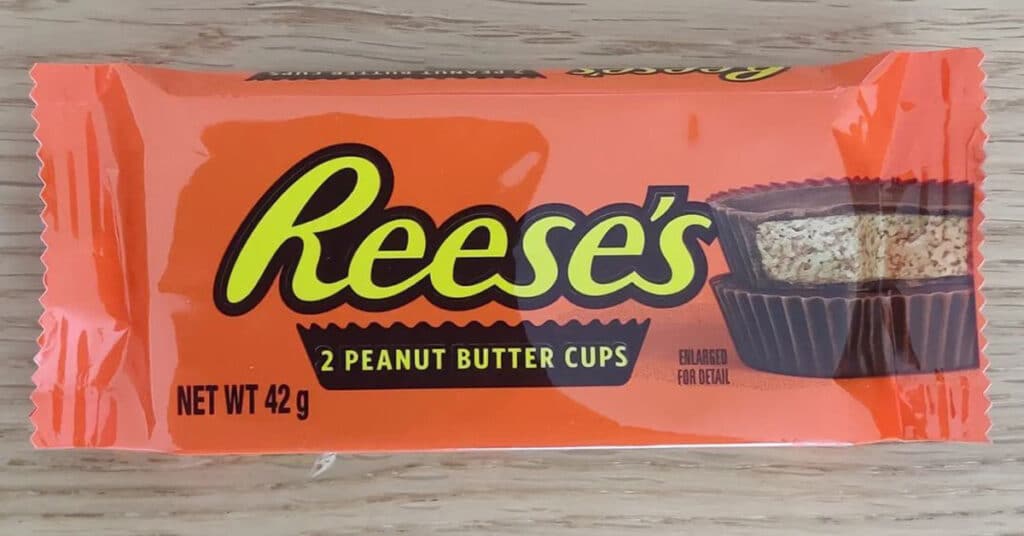
What Can We Define as “Candy”?
In order to understand the actual reason why Americans celebrate National Candy Day, first we need to know what is meant by candy at all. Generally, candy is defined by the use of a sizable amount of sugar or sugar substitutes on a physical level. Usually, how individuals perceive food affects the way they define candy.
Candy is typically consumed casually as a snack in between meals, frequently with the fingers, unlike sweet pastries given as a dessert course after a meal. Instead of dessert, each culture has its own definition of what is considered sweet. In one culture, the same meal could be considered a dessert and a candy in another.
There are many different kinds of candies. The candies include hard candies, soft candies, caramels, marshmallows, and taffy. Commercially, sugary sweets are frequently categorized into classes based on their chemical makeup and sugar content. Stick candy, lemon drops, and horehound drops are some examples of hard-boiled candies produced by the vacuum cooking procedure. Most people see chocolate as a distinct subset of confectionery.
According to US legislation, most sugary treats are considered foods with little nutritional value. Candy is not a substantial source of nutrients or dietary energy for most individuals, even in a culture where eating sweets is common. What’s more, candy is regarded as a source of empty calories because it has little to no nutritional benefit beyond food energy.
At the beginning of the 20th century, the high-calorie content of foods was marketed as a virtue, at a time when undernutrition was a severe issue, particularly for the poor and working class. Researchers hypothesized that candies, particularly those prepared with milk and almonds, were a cheap substitute for regular meals.
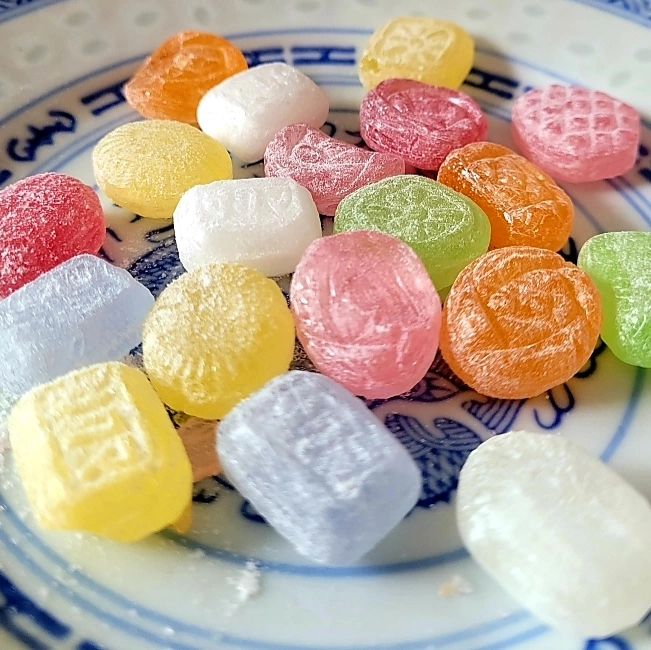
Candy Invention & Development
Even though today we celebrate National Candy Day, there was a time when candy wasn’t even considered favorable.
Due to the native nature of sugarcane in tropical South and Southeast Asia, sugar was originally refined in ancient India. There, pieces of sugar were made by boiling sugarcane juice and were eaten as a form of sweet called khanda. The inhabitants of India and their “reeds that generate honey without bees” were first discovered by the Persians and Greeks during the sixth and fourth centuries BCE. They adapted sugar and sugarcane farming, expanded it over the world, and soon sugar was one of the most significant trading commodities on the planet.
Candy was based on honey before sugar was widely accessible. In order to preserve fruits and flowers or to make candies, honey was utilized in ancient China, the Middle East, Egypt, Greece, and the Roman Empire. Before the Industrial Revolution, candy was frequently used as medicine, either to soothe the stomach or chill a sore throat. Only the wealthiest people’s tables had confectionery on them when the Middle Ages began. When it first started, it was a mixture of spices and sugar that was used to help with digestion.
In the 18th century, candy originally arrived in America from France and Britain. Only the affluent could partake in these new pleasures since very few colonists were adept at sugar work. Technology advancements made candy available to people other than the wealthy in the 1830s, during the height of the Industrial Revolution, and even created a new market exclusively for kids. Although some artisan sugar makers still existed, candy shops were quickly establishing themselves as national institutions, particularly in the lives of young people.
Oliver R. Chase patented his invention of the first candy press in America in 1847. The same year saw the invention of lozenges in a variety of forms as well as candies in a variety of colors and shapes.
The cotton candy machine was created in 1897 by William Morrison and John C. Wharton. The original name for the sugar threads was “fairy floss.” The candy business underwent a significant transformation after that time. The availability of sugar increased. There have been several candy inventions as well as the introduction of appealing colors and forms. With new goods and an open market, new businesses entered the sector.
This evolution of sweets was best shown by penny candies. The first item that youngsters purchased with their own money was penny candy. Because of this, candy store proprietors relied nearly solely on young customers to support their businesses. The Pure Food and Drug Act, the first federal law in the United States to regulate food and medications, including candy, was passed in 1906. This happened as a result of studies on the hazards of additives, exposés of the food business, and public pressure.
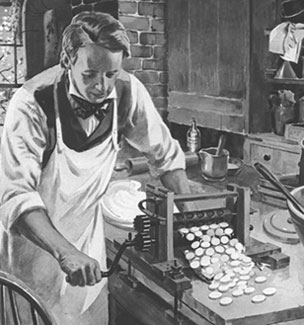
How To Celebrate National Candy Day
After understanding the reason why we celebrate National Candy Day and the history of this special holiday, you might be wondering how you can celebrate this day. That’s why we decided to gather some ideas to help you celebrate National Candy Day.
If you’re a candy lover, the best thing you can do is plan a fun time with your family or friends to try making candy as a way to honor National Candy Day. If you don’t feel nearly as ambitious to accomplish that, go to a nearby store and buy a variety of brand-new and well-known sweets to celebrate. Reward yourself with some pleasant and delectable candies.
There are plenty of other ways to observe National Candy Day, though. As was previously indicated, this is the ideal time for you to sample candies that you have not yet tasted. There are hundreds of different kinds of candies, so there’s no chance you’ve tasted them all. Try looking for candy from other nations if you can’t discover fresh candies in your neighborhood.
On National Candy Day, we would like to recommend that you buy some candy for a special someone. After all, there is nothing more pleasant than getting a surprise gift from a person we love. Additionally, this way, you will also make new happy memories.
Final Words
All in all, the majority of people celebrate National Candy Day on November 4. In other words, Candy Day might be celebrated just after Halloween. Many food-related blogs suggest the most obvious way honor National Candy Day is to consume as much as you can.
Still, don’t forget that eating too much candy at once can be harmful. Nevertheless, fun-size candy bars allow you to boost variety without significantly increasing your daily sugar consumption.

Nato is a content writer and researcher with a background in psychology. She’s passionate about writing about the candy industry and exploring the cultural significance of sweets and treats. She believes that the stories behind our favorite snacks can reveal a great deal about our values.
Please leave a review or any memories of this snack in the comments below. Thank you!
Click here for a full A-Z list of Snacks and Candy
